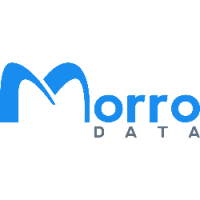3 Security Shortcomings of Traditional NAS Systems
3 Security Shortcomings of Traditional NAS Systems
Most of us know the awful feeling of having to start all over after losing data in a crash, an attack by a computer virus, or not saving a file correctly. A traditional Network Attached Storage (NAS) isn’t the best way to prevent that feeling. There are, however, alternatives to traditional NAS systems to stop data loss before it happens to your business.
Human Error
Strangely, the people you need to protect data from most, are the users themselves. Human error accounts for most data loss in business networks, with even companies like Pixar falling prey to their own users during the making of Toy Story 2.
On a traditional NAS system, users are given access to a server and can add, edit, and remove files from that server. If a user accidentally deletes a file from a server, it’s gone forever. If you’ve ever read the “This Action Cannot Be Undone” dialog box, then you know the stressful feeling when clicking OK.
Some NAS systems may use apps to back up files. However, an additional interface means additional training for users, more steps to get to the data, and just one more thing to update, monitor, and troubleshoot.
Ransomware Attacks
If you’ve ever had a computer virus, you know you wouldn’t wish them on anyone. In a ransomware attack, a file is encrypted by a hacker, making it inaccessible to you. How can a user regain access to it? By transferring a payment in the form of cryptocurrency to an anonymous address. The estimated global damage costs from ransomware attaches are estimated to be over $265 billion dollars by the year 2031. Billion!
If a traditional NAS is attacked with ransomware, there is no way to unencrypt the files without paying the ransom. A business either pays up, or the data is gone forever.
Disk Failure
While most, if not all, NAS configurations have redundancy via a RAID array, it’s possible that a “silent error” can render an entire disk array useless at the time of trying to recover from a disk failure. A silent error is when a defective sector exists on an otherwise working disk different from the failed disk. It’s silent because the sector was never accessed after going bad, therefore going unnoticed until the array needs to be rebuilt. During a RAID 5 array recovery with two defective disks, there is not enough good data left to rebuild the array.
It’s not a common scenario, but as multiple case studies would suggest, it happens. If it happens to a business, it could mean a catastrophic data loss.
Data Loss Scenarios
It’s a good thing these scenarios aren’t all that common. Otherwise, we’d be losing data all the time. But they happen, and when they do, they can have a huge impact on a business. Just think how close we were to never seeing Toy Story 2!
Data loss can not only slow down a business and cost valuable time, but can cost valuable dollars when spent paying for a ransomware attack. It’s one of the many reasons why switching to a Cloud NAS isn’t just a possibility, but an inevitability for businesses.
File Versioning in Cloud NAS
With automatic file versioning, multiple versions of a file will be saved to the Cloud NAS. This means users can’t accidentally delete important data; you can protect users from themselves. By downloading another file version, the user can start right where they left off.
Automatic file versioning also makes ransomware completely ineffective. In the case of a ransomware attack, it’s as easy as opening up a slightly older file, downloading it, and getting back to work. All of the hacker’s hard work can be erased with the simple deletion of the infected files with no damage to your data.
And finally, with multi-cloud redundancy, business data is secured across multiple remote servers which are always accessible. There’s simply nothing to physically fail.
The best part of Cloud NAS? It’s automatic. The IT team won’t need to schedule system backups or use full and incremental backup files to restore data. It’s automatically in the cloud with no steps needed. It’s the easiest way for businesses to prevent data loss before they even happen.
Learn more about Cloud NAS and Morro Data today
